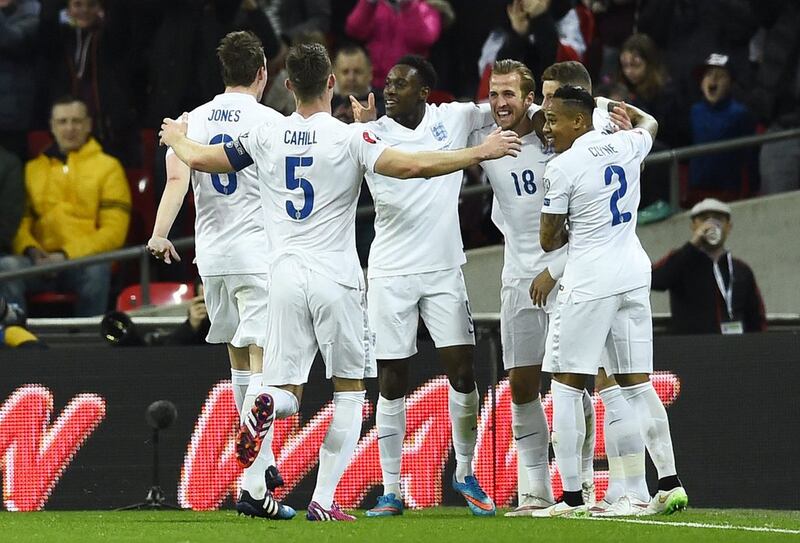It will be one of the younger and less experienced England teams that lines up in Turin on Tuesday night. Under such circumstances, the focus tends to be firmly on the future. Given the location, however, it is hard to ignore the past.
Turin staged England’s sole World Cup semi-final on foreign soil: not in Tuesday’s venue, the Juventus Stadium, but in the Stadio delle Alpi. The ground was demolished years ago. The game still looms large in English imaginations. A few years ago, a documentary, One Night in Turin, was made about England’s World Cup in 1990 and its transformative impact; it continues to this day. The next television rights deal, which is expected to be worth around £8 billion (Dh43.5bn), is proof of how football, seemingly a dirty word in the 1980s, became one of Britain’s growth industries and the Premier League the most lucrative division in the world.
The disparity between the profile of the club game and lack of success of the national team explains why the 1990 semi-final is remembered and mythologised. Chris England and Arthur Smith’s play An Evening With Gary Lineker was in part a comedy where, unlike in more recent years, the laughs weren’t at the expense of the England team. It was in part a fantasy, too, differing from reality when the penalty shootout against West Germany was level at 3-3 and entering an altogether preferable parallel universe where Stuart Pearce and Chris Waddle converted their spot kicks.
RELATED:
[ — Henderson determined to keep Gerrard’s legacy alive for club and country ]
[ — Restricted at Real Madrid but a roving Gareth Bale is a hit for Wales ]
[ — Hiddink’s powers on the wane as Holland struggle in Euro 2016 qualifying ]
A quarter of a century on, it remains the greatest near-miss in England’s footballing history. Recent World Cups have been a case of diminishing returns. England exited in the last eight in 2006, the last 16 in 2010 and the last 32 in 2014. At that rate, they won’t even be in Russia in 2018.
For the growing numbers who are too young to remember England win the 1966 World Cup, 1990 represents the high point. It is understandable England look back in their attempts to discover what went wrong since then. Perhaps 1990 was a time when, comparatively speaking, it was uncorrupted by money. Certainly the domestic game had not been invaded by the foreign masses.
Using Harry Kane as the poster boy for the Brits, the English Football Association chairman Greg Dyke announced plans to increase the home-grown contingent in Premier League clubs’ squads from eight to a minimum of 12 players as well as altering the rules to prevent players such as Cesc Fabregas from qualifying as home-grown.
The familiar lament is that England managers have too few players at their disposal. Yet it is significant that in 1990, when the old Division 1 was populated almost exclusively by Brits, manager Bobby Robson selected only two top-flight strikers, Peter Beardsley and Lineker. Their understudy, Steve Bull, came from second-division Wolverhampton Wanderers.
What the 1990 squad illustrates is that actually it is about quality, not quantity. There were plenty of mediocre players in the old Division 1 a quarter of a century ago, but England possessed a group of around 15 high-class internationals; perhaps only in 1996, when they reached the semi-finals of the European Championship, and in 2002-2006 when the misnamed “Golden Generation” were serial quarter-finalists, they had similar talent. They do not now, which in part explains the excitement that surrounds Kane. He has come through Tottenham Hotspur’s youth system and graduated to become the first team’s shining light. Like the Brylcreemed hair, it gives him an anachronistic feel.
Premier League clubs oppose Dyke’s plans, and understandably, but English footballers are not an endangered species. Some are protected; none are persecuted. Managers may be reluctant to trust younger players, but clubs want to develop them. It is far cheaper to produce a Kane than sign a Roberto Soldado, Spurs’ £26 million (Dh141.5m) non-scoring Spaniard. The basic economics show no need for “affirmative action”.
Rather than being the last of a dying breed, Kane is proof that the best will always break through. Steven Gerrard and Jamie Carragher did at Liverpool, John Terry at Chelsea, David Beckham, Paul Scholes, Nicky Butt and the Neville brothers at Manchester United. The fact his journey included four loan spells elsewhere only adds to the charm of the deserving Kane but many another has taken the indirect route to the top. If Danny Ings and Charlie Austin, two contenders for a place in the England squad, get a debut, they will deserve immense credit for going from non-league football to the international game. But so, in an era before expensive imports, did Pearce.
It was a different time, one where many an England player bettered himself by going abroad and when Scottish club Rangers supplied more members of Robson’s squad than United, Liverpool or Arsenal. But the lesson from history is that England prospered because of their prowess, not protectionism.
[ sports@thenational.ae ]
Follow us on Twitter @NatSportUAE






